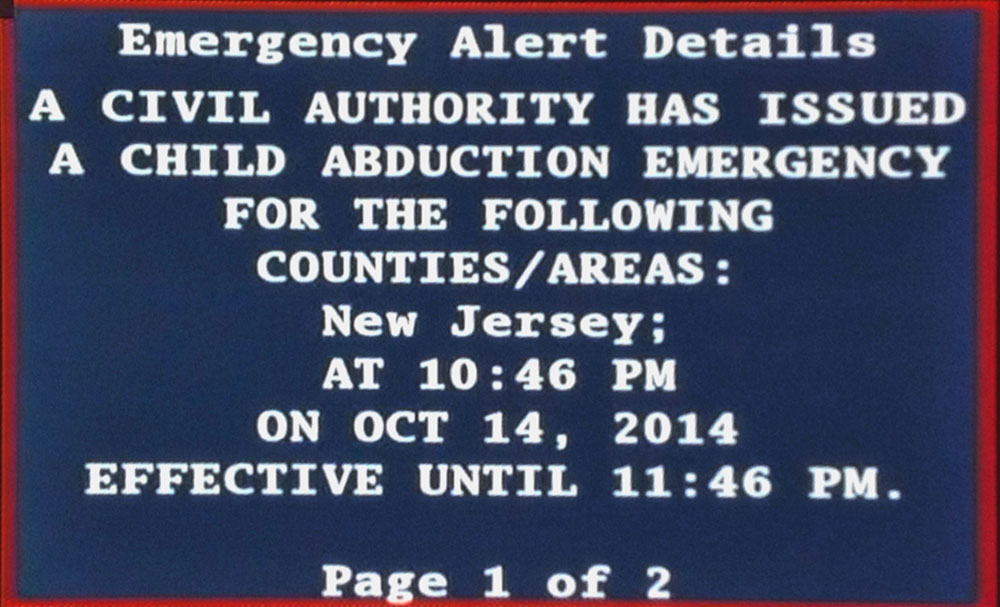The Evolution of Amber Alerts

In today’s fast-paced world, where technology is rapidly evolving, the need for robust and efficient emergency response systems has never been more crucial. One such system that has made a significant impact over the years is the Amber Alert system. Designed to assist in the rapid recovery of abducted children, the Amber Alert system has proven to be a vital tool in emergency response. This blog post delves into the history, development, effectiveness, and future improvements of the Amber Alert system.
The History and Development of the Amber Alert System
The Amber Alert system was born out of a tragic event that took place in 1996. Amber Hagerman, a nine-year-old girl from Arlington, Texas, was abducted while riding her bicycle. Despite the community’s efforts and extensive search operations, Amber was found murdered four days later. This heartbreaking incident prompted the establishment of a nationwide alert system to prevent such tragedies in the future.
Named in Amber’s memory, the Amber Alert system stands for “America’s Missing: Broadcast Emergency Response.” It was first implemented in the Dallas-Fort Worth area in 1996. The system aimed to disseminate critical information quickly to the public via various channels such as television, radio, and electronic highway signs.
The success of the initial program led to its expansion across the United States. By 2005, all 50 states had adopted the Amber Alert system, making it a nationwide initiative. The system’s reach has since extended beyond the U.S., with countries like Canada, Australia, and the United Kingdom implementing similar alert systems to protect children.
How the Amber Alert System Works
The Amber Alert system operates on a simple yet effective principle: the rapid dissemination of information to the public increases the chances of recovering an abducted child. When a child is reported missing and believed to be in imminent danger, law enforcement agencies follow a specific set of criteria to issue an Amber Alert.
These criteria typically include:
- Law Enforcement Confirmation: The abduction has been confirmed by law enforcement officials.
- Imminent Danger: The child is believed to be in imminent danger of serious bodily harm or death.
- Descriptive Information: Sufficient descriptive information is available to assist in the recovery of the child and/or the apprehension of the suspect.
- Child’s Age: In many cases, the child must be 17 years old or younger.
Once these criteria are met, an alert is issued through multiple platforms, including television, radio, digital billboards, social media, and mobile devices. The information shared typically includes a description of the child, the suspect, and any vehicle involved in the abduction.

Effectiveness of the Amber Alert System
Since its inception, the Amber Alert system has played a crucial role in the safe recovery of abducted children. As of 2024, the system has been credited with successfully recovering over 1,000 children in the United States alone. This remarkable achievement underscores the effectiveness of the Amber Alert system in mobilizing communities and leveraging technology to locate missing children swiftly.
One notable success story involves the case of Elizabeth Smart. In 2002, 14-year-old Elizabeth was abducted from her home in Salt Lake City, Utah. An Amber Alert was issued, and the widespread attention her case received ultimately led to her safe recovery nine months later. Elizabeth’s story highlights the power of the Amber Alert system in raising awareness and generating leads that can lead to the rescue of abducted children.
Improvements and Future Proposals
While the Amber Alert system has proven to be highly effective, there is always room for improvement. Several advancements and proposals aim to enhance the system’s efficiency and reach:
- Enhanced Technology Integration: Integrating advanced technologies such as GPS tracking, facial recognition, and AI-driven data analysis can improve the accuracy and speed of Amber Alerts. These technologies can help law enforcement identify patterns and predict potential abductions, leading to faster response times.
- Broader Community Involvement: Encouraging community participation through neighborhood watch programs and community policing can enhance the effectiveness of Amber Alerts. Educating the public on recognizing signs of abductions and reporting suspicious activities can play a crucial role in preventing and resolving cases.
- International Collaboration: Strengthening international cooperation can help track and recover abducted children who may be taken across borders. Sharing information and best practices between countries can lead to more coordinated and effective responses.
- Continuous Public Awareness Campaigns: Ongoing public awareness campaigns can keep the public informed about the Amber Alert system and its importance. These campaigns can also address common misconceptions and emphasize the role of community involvement in the system’s success.
- Enhanced Mobile Alerts: Improving the specificity and reach of mobile alerts can ensure that information reaches the right people at the right time. Geo-targeted alerts can focus on specific areas where the child is most likely to be found, increasing the chances of a successful recovery.

Conclusion
The Amber Alert system has come a long way since its inception in 1996. From its humble beginnings in Texas to becoming a nationwide and international initiative, the system has saved countless lives and brought hope to families in distress. The continuous evolution of technology and community involvement promises to make the Amber Alert system even more effective in the future.
As we look ahead, it is essential to support and improve these emergency response systems to ensure the safety and well-being of our children. By staying informed, vigilant, and involved, we can all contribute to making the world a safer place for our most vulnerable citizens.
In the end, the evolution of the Amber Alert system is a testament to the power of community, technology, and relentless determination in the face of adversity. Together, we can continue to build on this legacy and create a safer future for generations to come.
Please consider donating your Car, Truck, SUV, Van, RV, or Boat to one of our Charities.
NOTE: Our Blogs have been fact-checked; however, we cannot guarantee 100% accuracy. If you find any incorrect information, please let us know in the comments and we will remove or edit inaccurate content. Thank you!




